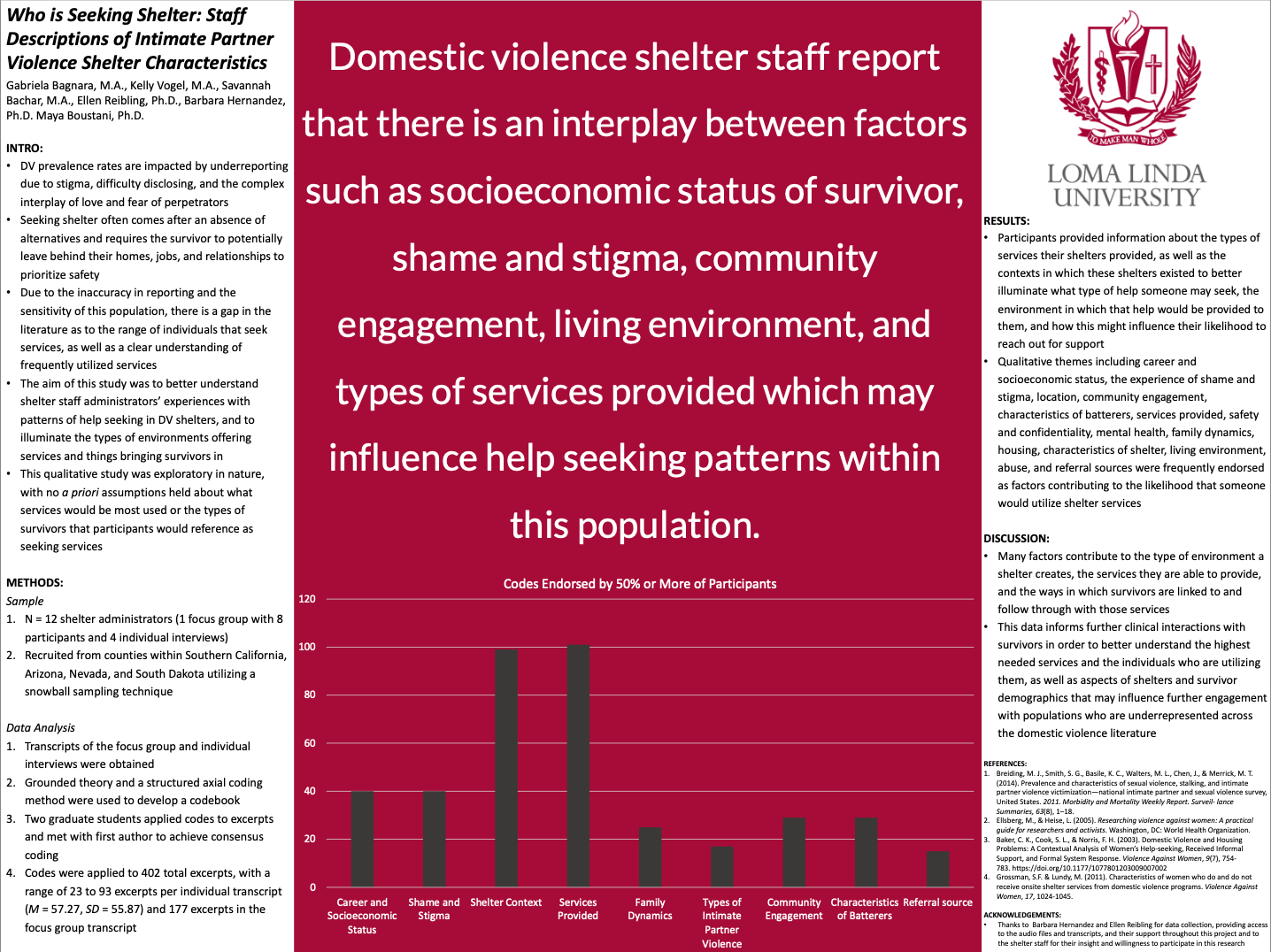Who is Seeking Shelter: Staff Descriptions of Intimate Partner Violence Shelter Characteristics and Services Provided

Intimate partner violence (IPV) is a public health crisis crossing cultural boundaries of gender, socioeconomic status, education, race, and ethnicity. Current prevalence rates for instances of IPV can only be understood as estimates, largely impacted by a substantial amount of underreporting due to factors such as stigma, difficulty in disclosing, and the complex interplay of love and fear of abusive partners. If reporting occurs, there are multiple channels through which survivors may disclose their experiences, frequently including close friends, as well as medical providers or emergency shelter staff in the instance of escalation of violence. Choosing to seek shelter services often comes after an absence of alternatives, and requires the survivor to potentially leave behind their homes, jobs, and relationships in order to prioritize their safety. Due to the inaccuracy in reporting and the sensitivity of this population, there is a gap in the literature as to the range of individuals that seek services, as well as a clear understanding of frequently utilized services. This qualitative study called upon shelter staff administrators’ experiences to illuminate the types of environments offering shelter services and the things bringing survivors through their doors. The current study was conducted using both individual (N = 4) and focus group (N = 1) semi-structured interviews and a total of 12 participants. Participants were selected through the use of snowball sampling and included individuals with a range of experience, geographic, and demographic considerations. This study was exploratory in nature, with no a priori assumptions about what services would be most used or the types of survivors that participants would reference as seeking services. Qualitative themes found throughout the study included career and socioeconomic status, the experience of shame, stigma, and denial, location, community engagement, characteristics of batterers, services provided, safety and confidentiality, mental health, family dynamics, housing, characteristics of shelter, living environment, physical or sexual abuse, and referral sources. This informs further clinical interactions with survivors in order to better understand the highest needed services and the individuals who are utilizing them, as well as ways to further engage with populations who may be underrepresented across the literature on domestic violence. Keywords: intimate partner violence, domestic violence, shelter staff, shelter environment



